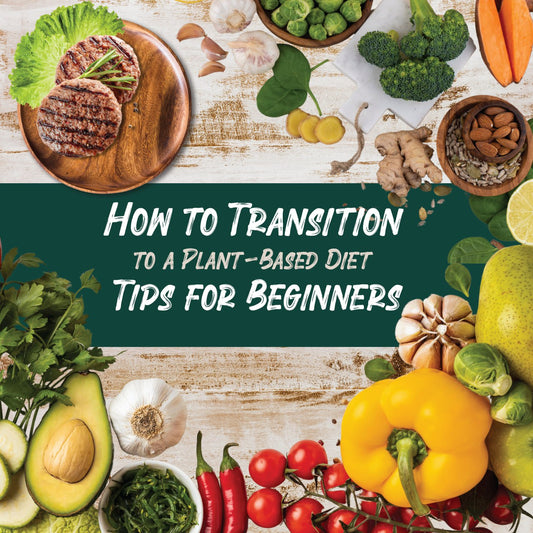Blog posts
View all-

How to Transition to a Plant-Based Diet: Tips f...
Are you ready to embrace a healthier, more sustainable lifestyle but unsure where to start? Transitioning to a plant-based diet can initially seem overwhelming, but with the right approach, it...
How to Transition to a Plant-Based Diet: Tips f...
Are you ready to embrace a healthier, more sustainable lifestyle but unsure where to start? Transitioning to a plant-based diet can initially seem overwhelming, but with the right approach, it...
-

Not Just for Burgers: 4 Delicious & Easy Plant-...
Plant-based burger patties are more than just a burger substitute—they’re a gateway to exciting, flavor-packed meals! Whether you're looking for a protein boost or a quick meal fix, here are...
Not Just for Burgers: 4 Delicious & Easy Plant-...
Plant-based burger patties are more than just a burger substitute—they’re a gateway to exciting, flavor-packed meals! Whether you're looking for a protein boost or a quick meal fix, here are...
-

Peanut Butter: A Spread That Tells a Story of F...
Peanut Butter: Just a Spread? Think Again. Peanut butter. Just saying the name brings back memories of tasty sandwiches, late-night snacks, and that unique nutty aroma. But peanut butter isn’t...
Peanut Butter: A Spread That Tells a Story of F...
Peanut Butter: Just a Spread? Think Again. Peanut butter. Just saying the name brings back memories of tasty sandwiches, late-night snacks, and that unique nutty aroma. But peanut butter isn’t...



